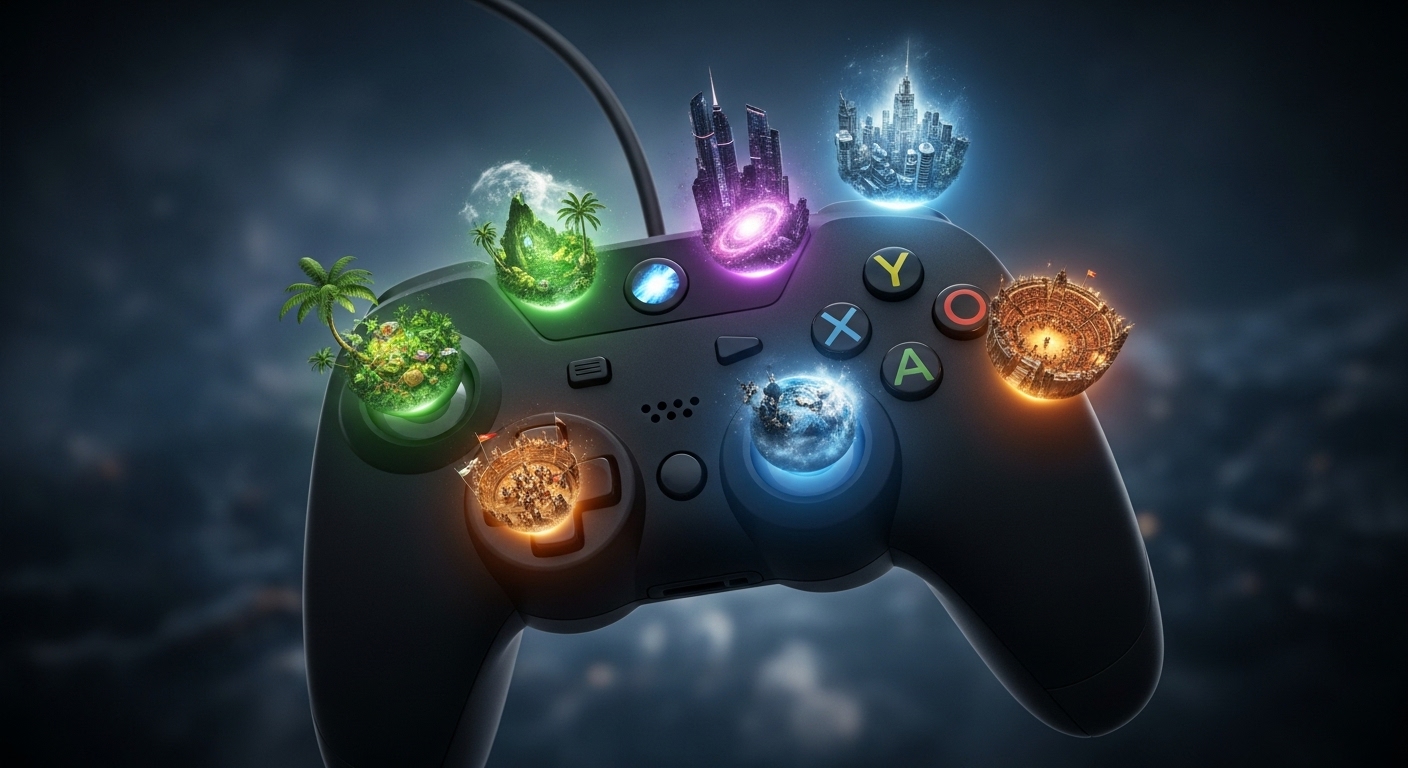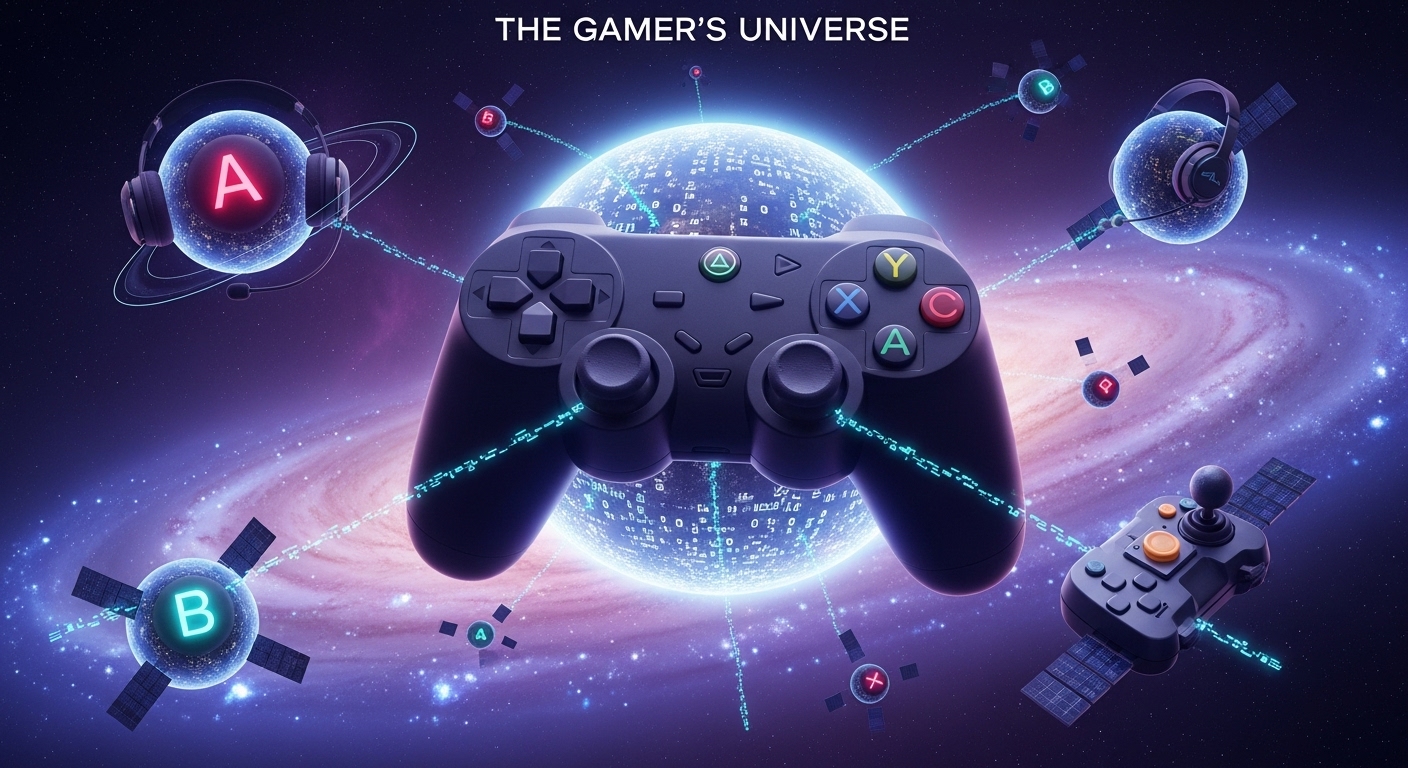Introduction: Gaming’s Journey from Leisure to Lifestyle
Gaming has transformed from a niche hobby into a mainstream cultural phenomenon, deeply embedded in modern entertainment. What began as simple pixelated screens has now evolved into intricate digital universes that captivate millions of players worldwide. Whether it’s the immersive worlds of open-world games or the fast-paced action of esports tournaments, gaming now offers something for everyone. This blog will take you through the evolution of gaming, its impact on society, and what the future holds for this dynamic industry.
The Birth of Gaming: A Simple Pastime with Massive Impact
The history of video games dates back to the 1950s and 1960s, when the first rudimentary games like Tennis for Two and Spacewar! were created. These early games were the foundation of what would soon become a global industry. In the 1970s, arcade games such as Pong revolutionized the idea of interactive entertainment. Arcades became social hubs where players could challenge each other, compete for high scores, and experience a sense of community.
This marked the beginning of video gaming as a mainstream activity. By the early 1980s, iconic arcade games like Pac-Man and Donkey Kong were introduced, capturing the attention of millions and giving birth to a new cultural phenomenon. From there, gaming rapidly expanded, moving into the home market with consoles like the Nintendo Entertainment System (NES), bringing the arcade experience into the living room.
The Console Revolution: Shaping Gaming as a Cultural Mainstay
The 1980s and 1990s saw the rise of home consoles, forever changing the gaming experience. With systems like the NES, Sega Genesis, and later the Sony PlayStation, gamers no longer had to visit arcades to experience the thrill of playing. These consoles allowed players to enjoy more immersive experiences from the comfort of their own homes, with games that featured more complex narratives, characters, and worlds.
One of the most influential shifts during this era was the move from 2D platformers to 3D worlds, opening the door for more expansive games like Super Mario 64, Final Fantasy VII, and Gran Turismo. This transition pushed the boundaries of what was possible in gaming, enabling developers to create deeply engaging worlds with intricate stories and dynamic gameplay. The console revolution solidified gaming as a mainstream entertainment medium, appealing to all age groups and creating a diverse and passionate community of players.
The Rise of Online Gaming: Connecting Players Around the World
As the internet became widely accessible in the late 1990s and early 2000s, gaming underwent a profound transformation. Online multiplayer games allowed players from around the world to connect, compete, and cooperate in real-time. Games like Warcraft, Quake, and Counter-Strike introduced the concept of global gaming communities, where players could team up or face off regardless of their physical location.
This shift also led to the development of massively multiplayer online role-playing games (MMORPGs) like World of Warcraft, which offered vast, persistent worlds where thousands of players could interact simultaneously. The social aspect of online gaming grew immensely, with players forming guilds, participating in large-scale raids, and even forging lifelong friendships. As a result, online gaming became more than just a pastime—it became a global social activity.
The Mobile Revolution: Gaming at Your Fingertips
The introduction of smartphones in the late 2000s brought gaming to the palm of your hand. Mobile gaming quickly became one of the most accessible and popular forms of entertainment, with titles like Angry Birds, Candy Crush Saga, and Clash of Clans offering quick, addictive gameplay that anyone could enjoy on their phone.
Mobile gaming’s success lies in its accessibility. Games could be downloaded instantly, and players could enjoy a session on their commute, during lunch breaks, or in between tasks. The rise of mobile gaming democratized the gaming experience, allowing people from all walks of life to become gamers. This shift also led to a new wave of casual gaming, where the emphasis was on simple, easy-to-learn mechanics that anyone could pick up without needing to invest in expensive hardware.
The Emergence of Esports: Gaming as a Spectator Sport
What once started as a casual hobby has now evolved into a professional sport. Esports, or competitive gaming, has exploded in popularity over the last decade. With games like League of Legends, Dota 2, Counter-Strike: Global Offensive, and Fortnite, professional players now compete in global tournaments with million-dollar prize pools, attracting millions of viewers online.
Esports has grown into a multi-billion-dollar industry, with professional teams, sponsorships, and streaming platforms like Twitch and YouTube Gaming providing gamers with new ways to connect with fans. Esports events are now broadcast live, filling arenas and garnering attention comparable to traditional sports leagues. This shift has elevated gaming to new heights, turning skilled players into celebrities and creating a new form of entertainment that blends competition, storytelling, and community in ways previously unseen.
The Age of Virtual Reality and Augmented Reality: Entering New Realms
Virtual reality (VR) and augmented reality (AR) represent the next frontier in gaming, providing players with truly immersive experiences. VR allows players to step into a completely digital world, where they can interact with their environment in a more tangible and physical way than ever before. Games like Beat Saber, Half-Life: Alyx, and Superhot VR are pushing the boundaries of what’s possible in gaming, making players feel as though they are truly a part of the world they’re exploring.
AR games, such as Pokémon GO, have also made waves by blending the real world with virtual elements. These games encourage players to interact with their physical surroundings while playing, creating an innovative mix of reality and virtual gaming experiences. The immersive nature of VR and AR has the potential to redefine gaming once again, offering experiences that are far more interactive, sensory, and expansive than anything we’ve seen before.
The Impact of Gaming on Culture and Society
Gaming is no longer just an entertainment medium—it has become a cultural force that influences music, movies, fashion, and even social movements. Video games have inspired movies like The Angry Birds Movie and Warcraft, and have been referenced in music videos, TV shows, and fashion. The rise of gaming influencers, streamers, and YouTubers has also contributed to gaming’s cultural significance, with many players using social platforms to share their gaming experiences, thoughts, and opinions with millions of followers.
Gaming has also begun to be recognized for its potential to impact social change. Many developers are using their platforms to tell powerful stories, raise awareness about important issues, and challenge societal norms. Games like The Last of Us have addressed themes of survival, loss, and humanity, while titles like Celeste and Hellblade: Senua’s Sacrifice have opened up conversations about mental health and the importance of representation in gaming.
The Future of Gaming: What Lies Ahead
As technology continues to evolve, the future of gaming looks more exciting than ever. We can expect further advancements in VR and AR, making gaming experiences even more immersive and interactive. Cloud gaming services like Google Stadia and Xbox Cloud Gaming are likely to make high-quality gaming more accessible by eliminating the need for expensive hardware, allowing players to stream games directly to their devices.
Furthermore, with the rise of artificial intelligence (AI) and machine learning, future games may offer more dynamic and responsive gameplay, where the in-game world reacts intelligently to player actions. The integration of AI could also lead to more personalized experiences, tailoring the game world to suit each player’s preferences and playstyle.
Conclusion: Gaming as a Global Phenomenon
From its humble beginnings in arcades to the global esports tournaments of today, gaming has become an undeniable part of our culture. It connects people from around the world, transcending language, age, and background. As technology continues to advance, gaming will remain at the forefront of innovation, offering players new and exciting ways to experience the digital world.
With its ability to bring people together, tell powerful stories, and continuously push the boundaries of technology, gaming is poised to continue its evolution, becoming an even more integral part of the entertainment landscape for generations to come.



